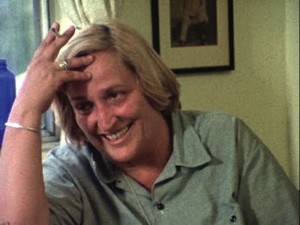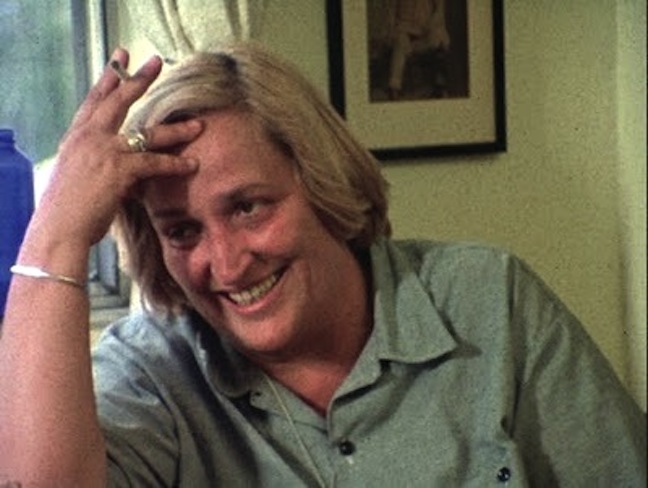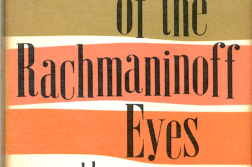TOWARD THE END of the 1977 documentary Word Is Out: Stories of Some of Our Lives, Pat Bond remarks that “one of the depressing things about lesbians being accepted is that we lose our sense of the ‘in’ group, the adventure of being different in a straight world.” One of the filmmakers then asks the 52-year-old writer and performer if she would prefer to go back to how things were before. Bond reflects for a moment but finally says, “No, no. I— I would prefer that we be accepted.”
 It’s a good thing Bond comes around, because she’s appearing in the film that likely did more than any other to foster the transformation in gay and lesbian life of which she speaks. For many reviewers of Word Is Out, Bond was the film’s star. She launched a career as a solo performer from the success of the film and was soon touring the country with two one-woman shows. One of them, Conversations with Pat Bond, built on the often-hilarious tales of pre-Stonewall lesbian community and survival that she recounts in the film. Thousands of gays and lesbians clearly shared Bond’s affection for queer underground life before the great dawn of acceptance. But it was just as clear that there was no going back.
It’s a good thing Bond comes around, because she’s appearing in the film that likely did more than any other to foster the transformation in gay and lesbian life of which she speaks. For many reviewers of Word Is Out, Bond was the film’s star. She launched a career as a solo performer from the success of the film and was soon touring the country with two one-woman shows. One of them, Conversations with Pat Bond, built on the often-hilarious tales of pre-Stonewall lesbian community and survival that she recounts in the film. Thousands of gays and lesbians clearly shared Bond’s affection for queer underground life before the great dawn of acceptance. But it was just as clear that there was no going back.
Word Is Out cuts together individual interviews into an affable group portrait of gay people in the U.S. Although it wasn’t the first nonfiction film made by gay people about gay people, it broke significant ground in the form, tone, and scope of its representation. One of its major contributions was to bring gay men and women together in one film—two camps that had spent most of the decade socializing and organizing separately. As an indication of just how tenuous this cross-gender collaboration was in the mid-1970s, the men and women onscreen virtually never share the frame; they came together only in the edit. Word Is Out also heralded a profound shift in gay representation by eschewing the theatrical, erotic, and camp approaches of earlier gay cinema in favor of a more soberly realistic approach, an idiom arguably better suited to claiming our right to citizenship on the national stage.
The film began with the vision of Peter Adair (1943–1996), an experienced filmmaker who had also served as a producer for the San Francisco PBS affiliate, KQED. Adair, son of visual anthropologist John Adair, conceived of the film as an ethnography of his own “tribe.” Committed to making a film that balanced men and women, he brought his sister Nancy on board—one of the few lesbians he knew. The two were eventually joined by four others: two experienced filmmakers, Lucy Massie Phenix and Veronica Selver; and two film neophytes, Andrew Brown and Rob Epstein. Epstein, who started as a volunteer before graduating to full membership in the Mariposa Film Group, would go on to win two Academy Awards for his documentaries on gay subjects, The Times of Harvey Milk (1984) and Common Threads: Stories from the Quilt (1989).
Word Is Out took six filmmakers, a quarter of a million dollars, and four years to make. It was remarkably ambitious in both its breadth of representation and multiplicity of target audiences. Adair’s initial, modest vision was of a film that could be shown in schools in order to reach closeted gay kids with positive images. As the project grew beyond this educational frame, a second target became straight adults who were intolerant or simply ignorant about gay people. Although production began well before the intense gay rights struggles of the late 70’s, the film premiered right in the thick of things, on December 1, 1977—six months after Anita Bryant’s victory in Dade County, Florida, and just as activists in California were gearing up for the battle against State Senator John Briggs’s Proposition 6. The film immediately became an important activist tool. Perhaps most notably, it had a national PBS broadcast in October 1978, just a month before the California vote.
The film’s third target audience was of course out gay people. It was here that the pros and cons of positive-image filmmaking met with the heaviest scrutiny. A number of writers in the gay press and Left press took the film to task for omitting various elements of gay political and sexual culture. For example, there’s virtually no discussion of cruising or the baths, which were major elements of 70’s gay male experience by most accounts. And political groups, when they are mentioned in the film, come across more as support groups and social spaces than as organizations dedicated to social transformation. (Harry Hay appears in the film without mention of the Mattachine Society or his work as a Communist labor organizer; he is simply an affable older gentleman in a committed relationship with his lover John.) There was apparently an upside to this restrained approach. Reviews in the mainstream press were consistently positive. The film also was able to reach well beyond the gay and lesbian audiences to which earlier movement films had been restricted.
The filmmakers assembled a wealth of biographical material while working on the project, and they had the remarkable foresight to preserve it all for posterity. In their search for the final cast they conducted and videotaped pre-interviews with more than 100 lesbians and gay men. VHS copies of the tapes are now housed in the Peter Adair Papers at the San Francisco Public Library. (Along similar lines, full transcripts of the film interviews with the people who appear in Word Is Out were published in 1978 in an accompanying book to the film, edited by Nancy Adair and her mother Casey Adair.) Gay and lesbian luminaries Tom Ammiano, Charlotte Bunch, Audre Lorde, and Pat Parker were among the people interviewed on video but not on film, along with a host of less celebrated but often just as fascinating “ordinary” folk. The tapes include frank discussions of racism within gay communities, gay male misogyny, various strands of feminist politics, bisexuality, prostitution, intergenerational relationships, and an abundance of coming-out stories—far more material than what was included in the two-hour film.
Despite its national scope, Word Is Out was ultimately a project of the San Francisco Bay Area. The film’s makers and half of its interview subjects lived here, as I now do. I have just published a book all about Word Is Out as part of Arsenal Pulp Press’s “Queer Film Classics” series. Thanks to the film, I perceive a web of intimate queer histories overlying the area, many of which have yet to be traced to their conclusion.
Greg Youmans is the author of Word is Out: A Queer Film Classic (Queer Film Classics), now available from Arsenal Pulp Press.





